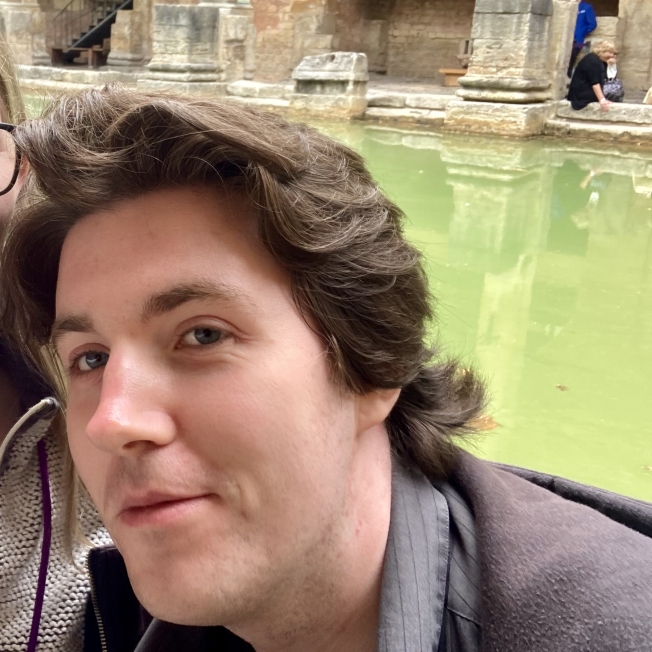ZTF Faces
This section features PhD students, postdocs and young faculty who are part of the global ZTF collaboration.
Mark Magee
Postdoctoral fellow, Trinity College Dublin, Ireland
Where was your starting point and how did you discover astronomy?
I was born and raised in Belfast, Northern Ireland. I came to astronomy relatively late. Similar to a lot of children, I thought space was pretty cool, but that was about it. As we started to learn more about it at secondary school, I got more interested. Physics and astronomy were some of the few topics I found genuinely interesting but also happened to be reasonably good at. This was around the age we had to start making big decisions about what direction our lives would take. So one day I made my decision - I would work towards astronomy.
My path through academia has been quite uneventful really -- it's taken place entirely on the island of Ireland. For both my undergraduate and PhD, I studied at Queen's University Belfast. During my undergraduate, I was fortunate enough to take part in a summer research project working with Pan-STARRS that was aimed at trying to identify outbursts from massive stars before they exploded as supernovae. My master's thesis was completely different and focused on studying Kuiper Belt objects in the outer solar system, again using Pan-STARRS. For my PhD, I returned to studying supernovae - this time not from massive stars, but from less massive white dwarfs that explode as type Ia supernovae. Part of what attracted me to this PhD project wasn't just being able to work on supernovae again. It was the opportunity to work in both observational and theoretical astronomy. I was able to gain experience using telescopes and surveys, but also using and writing complex codes for simulations. Living this sort of double-life as an observer and modeller has allowed me to have a much broader appreciation for my field. Now I'm a postdoctoral fellow in Trinity College Dublin.
What are you playing with in the ZTF playground?
At Trinity College Dublin, my work has been centred around trying to understand observations of type Ia supernovae within the first few days of explosion. Sometimes these supernovae will show little bumps in their light curves and those bumps can gives us clues as to how the white dwarf exploded or what the companion star was. Trying to catch a supernova the day after it exploded however is not an easy task. With a massive survey like ZTF though, it becomes a lot easier. ZTF maps the visible northern sky every couple of days and this is exactly what we need to try and see these early bumps - large sky coverage and a few day cadence.
Within ZTF, I've been helping to analyse the largest, homogeneous sample of young type Ia supernovae ever. With this sample we can start to add constraints on how many type Ia supernovae have bumps. These bumps only last a few days after explosion and most supernovae are discovered after this time. Therefore, with a sample of young type Ia supernovae from ZTF we can start to ask whether all supernovae have bumps but we just don't catch them early enough or if they're actually incredibly rare. These kinds of questions can only be answered with a large, well-defined sample, like the one we have from ZTF. Since ZTF moved to a 2 day cadence, we're also expecting a 50% boost in the number of young type Ia supernovae discovered that will be useful for our analysis. This is a huge increase and will allow us to place even tighter constraints on the fraction of these supernovae with early bumps.
Where do you want to steer your rocket in the future?
Ultimately, I would like to lead my own research group working on type Ia supernovae. Throughout my PhD and post-doc, I've supervised many undergraduate students on research projects. For me, this has been an excellent way of learning new things and experimenting with new methods. Leading my own group I would have the opportunity for much larger projects with my own PhD students or post-docs.
In terms of what I would like to do scientifically, much of the general interest in type Ia supernovae is focused around their use as standardisable candles; they're incredibly important tools for calculating distances in the universe. Focussing on only their use a distance indicators though really undersells why they are so important and inherently interesting in their own right. Most stars in the universe will end up as white dwarfs. Some fraction of them will then explode as type Ia supernovae. We don't know why! This is a pretty big gap in our understanding and one that I want to help fill in.
If you were not an astronomer, what would you be?
Although I am an astronomer, I never really consider it a `real job`. It doesn't feel like a real job. Aren't they supposed to be boring or something you don't want to do? I'm fortunate enough to be able to do something I enjoy. If I wasn't an astronomer, I guess my dream job would also be centred around something I enjoy: movies. I love movies and watch them religiously. Any genre. Good or bad. In an ideal world, I'd like to give directing a go. I can't say I'd be any good at it, but there are plenty of bad directors out there, what's one more?
A book that shook your worldview?
Truthfully, I don't read for pleasure that much any more. If I was to pick a book that did have an impact on me though, I would probably go with Animal Farm by George Orwell. We studied this in school and it was one of the only books I actually enjoyed being forced to read at the time.
If you’ve had a bad day at work, you will….
I don't really think I have bad days at work...
